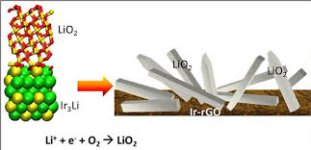Hillhater
100 TW
Lock said:Still Unobtainium for us mere mortals but nice to see this stuff coming down the pipe:
http://www.sionpower.com

Technology Overview
Sion Power has achieved breakthrough results by a unique merging of sulfur and lithium chemistries to develop Li-S technology. Sion Power uses the well-known high electrochemical potential of lithium and combines it with sulfur to attain superior rechargeable performance. Theoretical specific energy is in excess of 2500 watt hours per kilogram and energy density exceeded 2600 watt hours per liter.
By using the powerful combination of the elements, lithium and sulfur, in the most efficient geometry, a thin-film sandwich, Sion Power has created a rechargeable battery with advanced characteristics. Sion Power's Li-S technology provides rechargeable cells with a specific energy of over 350 Wh/kg, which is 50% greater than the currently commercially available rechargeable battery technologies. Over 600 Wh/kg in specific energy and 600 Wh/l in energy density are achievable in the near future.
This unique chemistry can be designed to deliver high energy, high power or a combination depending upon the requirements of the application.
Furthermore, Sion Power cells have a voltage of 2.1 volts that is ideal for the next generation of electronics expected to operate at 2 volts or less. For higher voltages, the cells can be easily connected in series.
Lithium Sulfer Technology:
Li-S is both cost effective and cost competitive when compared to other battery systems Battery costs are driven primarily by the material content and yield. As sulfur is much less expensive than the typical components of other battery systems, the Li-S technology starts with a lower material cost than lithium-ion or lithium-polymer batteries. Manufacturing techniques for Li-S batteries are very similar to those used in other battery chemistries.
Ease of Production:
Manufacturing of Li-S cells is no more difficult than manufacturing lithium-ion liquid or lithium-ion polymer cells. The anode and cathode of Li-STM cells are thin materials substantially similar in thickness and tensile strength to those of lithium-ion. Standard lithium-ion winders can be used with little to no modifications. Prismatic and cylindrical form factors can be produced from the same anode and cathode raw materials.
Data sheet here:
http://sionpower.com/pdf/articles/LIS Spec Sheet 10-3-08.pdf
Looks like they are working with PolyPlus
http://www.polyplus.com/lisulfur.html
Just wanted to mention Sion here as "sion" only gets 5 hits on ES... they supplied the Li-S cells used for the Zephyr unmanned airplane seen here:
http://endless-sphere.com/forums/viewtopic.php?f=38&t=20190
tks
Lock
Ok !. So it's been a few years since thes Li-S cells first started production, and with apparently huge improvement potential to over 600-1000 Whr/ kg. And reported very low costs (<<$100/kWhr ?)
So where are they ??
Are Sion just sitting on this technology, or does it have some unmentioned issues ??
WTF is going on ?









